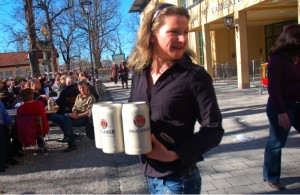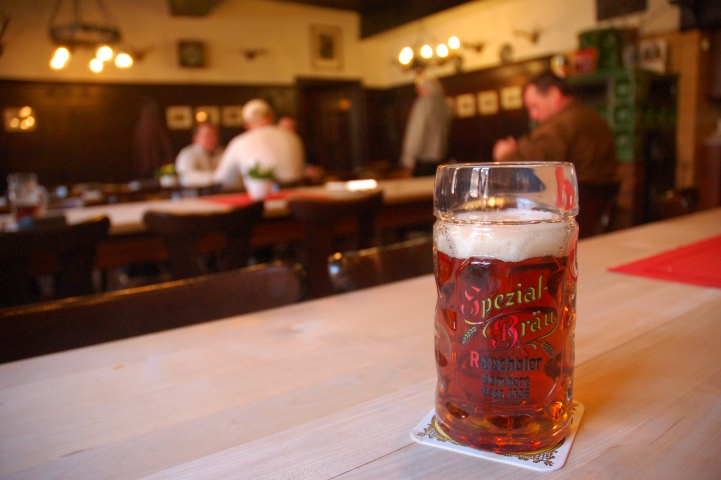
Here are a few more photos from Prague’s Salesian Beer Museum, an “accidental” collection of more than 2,000 bottles, 4,000 beermats and the weird, beer-themed collectibles known as breweriana, many of which come from the Czech lands.
Looking through the shelves, I was struck by how much evidence these artifacts provide for the way people here once lived, as well as a contrast to the way we live now. One of the most interesting items in the collection is the advertising placard (above) for the Měšťanský pivovar na Královských Vinohradech, the brewery in the Vinohrady neighborhood which ran from 1893 to 1943, along with scores of other beer makers once working in the Czech capital. In a sign of changing priorities, the Vinohrady brewery has recently been converted into luxury apartments.
So we don’t need historic breweries — we need plush digs. But our old beer culture had at least one advantage: much better graphic design, as witnessed by the museum’s collection of unusual beermats.












